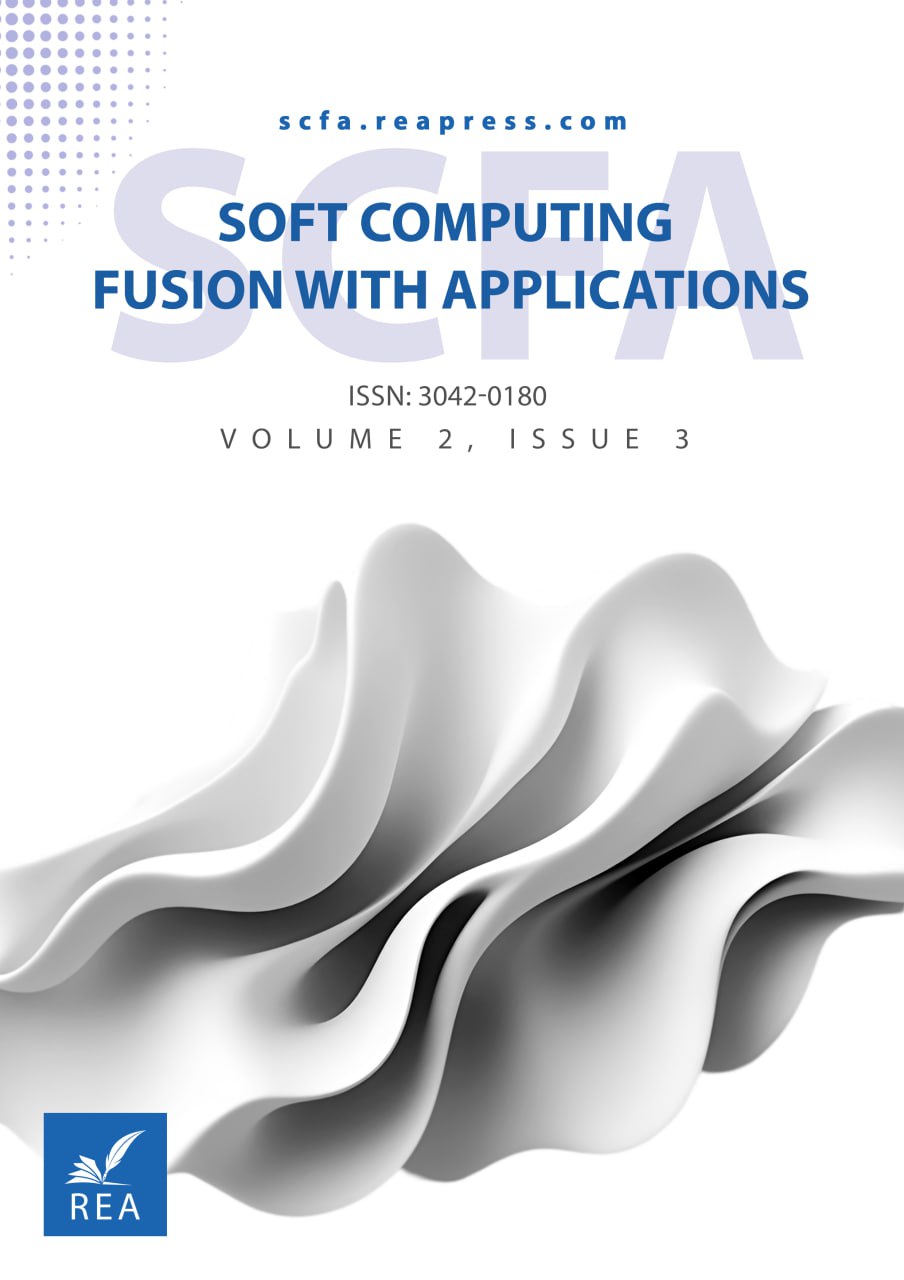Note for Intuitionistic HyperRough Set, One–directional S–Hyperrough Set, Tolerance Hyperrough Set,and Dynamic Hyperrough Set
Abstract
Various set-theoretic models have been proposed to handle uncertainty, including Fuzzy Sets, Intuitionistic Fuzzy Sets, Neutrosophic Sets, and Soft Sets. Rough set theory provides a mathematical framework for approximating subsets using lower and upper bounds defined by equivalence relations, effectively capturing uncertainty in classification and data analysis. Building on these foundational ideas, further generalizations such as Hyperrough Sets and Superhyperrough Sets have been developed.
In this paper, we introduce newly defined concepts of the Intuitionistic Hyperrough Set, One–directional S–Hyperrough Set, Tolerance Hyperrough Set, and Dynamic Hyperrough Set. These are extended versions of the Intuitionistic Rough Set, One–directional S–rough Set, Tolerance Rough Set, and Dynamic Rough Set, respectively, constructed using the framework of Hyperrough Sets. Additionally, we explore extensions constructed using the Superhyperrough Set framework.
Keywords:
Rough set, HyperRough Set, SuperHyperRough set, Intuitionistic rough set, One-directional S-rough set, Tolerance rough set, Dynamic rough setReferences
- [1] Zadeh, L. A. (1965). Fuzzy sets. Information and control, 8(3), 338–353. https://doi.org/10.1016/S0019-9958(65)90241-X
- [2] Atanassov, K., & Gargov, G. (1998). Elements of intuitionistic fuzzy logic. Part I. Fuzzy sets and systems, 95(1), 39-52. https://doi.org/10.1016/S0165-0114(96)00326-0
- [3] Smarandache, F. (1998). Neutrosophy: Neutrosophic probability, set, and logic: Analytic synthesis & synthetic analysis. https://philpapers.org/rec/Smannp
- [4] Smarandache, F. (1999). A unifying field in Logics: Neutrosophic Logic. In Philosophy (pp. 1-141). American Research Press. http://dx.doi.org/10.5281/zenodo.49174
- [5] Molodtsov, D. (1999). Soft set theory—first results. Computers & mathematics with applications, 37(4-5), 19-31. https://doi.org/10.1016/S0898-1221(99)00056-5
- [6] Maji, P. K., Biswas, R., & Roy, A. R. (2003). Soft set theory. Computers & mathematics with applications, 45(4-5), 555-562. https://doi.org/10.1016/S0898-1221(03)00016-6
- [7] Pawlak, Z. (1982). Rough sets. International journal of computer and information sciences, 11, 341–356. https://doi.org/10.1007/BF01001956
- [8] Broumi, S., Smarandache, F., & Dhar, M. (2014). Rough neutrosophic sets. Infinite Study, 32, 493-502. http://dx.doi.org/10.5281/zenodo.30310
- [9] Pawlak, Z., Wong, S. K. M., & Ziarko, W. (1988). Rough sets: Probabilistic versus deterministic approach. International Journal of Man-Machine Studies, 29(1), 81-95. https://doi.org/10.1016/S0020-7373(88)80032-4
- [10] Jech, T. (2003). Set theory: The third millennium edition, revised and expanded. Springer. https://doi.org/10.1007/3-540-44761-X
- [11] Pawlak, Z. (1998). Rough set theory and its applications to data analysis. Cybernetics & Systems, 29(7), 661-688. https://doi.org/10.1080/019697298125470
- [12] Beaubouef, T., & Petry, F. E. (2007). Intuitionistic rough sets for database applications. In Transactions on Rough Sets VI: Commemorating the Life and Work of Zdzisław Pawlak, Part I (pp. 26-30). Berlin, Heidelberg: Springer Berlin Heidelberg. https://doi.org/10.1007/978-3-540-71200-8_2
- [13] Beaubouef, T., & Petry, F. (2013). Information systems uncertainty design and implementation combining: Rough, fuzzy, and intuitionistic approaches. In Flexible approaches in data, information and knowledge management (pp. 143-164). Cham: Springer International Publishing. https://doi.org/10.1007/978-3-319-00954-4_7
- [14] Beaubouef, T., & Petry, F. E. (2009). Uncertainty modeling for database design using intuitionistic and rough set theory. Journal of Intelligent & Fuzzy Systems, 20(3), 105-117. https://doi.org/10.3233/IFS-2009-0422
- [15] Zou, W., Chen, P., & Huang, J. (2011). Digital image information disguising technology research based on S-rough sets. 2011 3rd international conference on computer research and development (pp. 183-187). IEEE. https://doi.org/10.1109/ICCRD.2011.5763999
- [16] Dongya, L., Xuefang, R., & Kaiquan, S. (2009). Rough law generation and its separation-recognition. Journal of systems engineering and electronics, 20(6), 1239-1246. https://ieeexplore.ieee.org/abstract/document/6074575
- [17] Jinming, Q., & Li, Z. (2009). F-interference law generation and its feature recognition. Journal of systems engineering and electronics, 20(4), 777-783. https://ieeexplore.ieee.org/document/6074502
- [18] Xiumei, H., Haiyan, F., & Kaiquan, S. (2008). S-rough sets and the discovery of F-hiding knowledge. Journal of systems engineering and electronics, 19(6), 1171-1177. https://doi.org/10.1016/S1004-4132(08)60215-7
- [19] Hu, Y. C. (2015). Flow-based tolerance rough sets for pattern classification. Applied soft computing, 27, 322-331. https://doi.org/10.1016/j.asoc.2014.11.021
- [20] Stepaniuk, J., & Kretowski, M. (1995). Decision system based on tolerance rough sets. Proceedings of the Fourth International Workshop on Intelligent Information Systems (pp. 62-73). Augustow, Poland. https://B2n.ir/eh4291
- [21] Hu, Y. C. (2016). Tolerance rough sets for pattern classification using multiple grey single-layer perceptrons. Neurocomputing, 179, 144-151. https://doi.org/10.1016/j.neucom.2015.11.066
- [22] Mac Parthalain, N., & Shen, Q. (2009). Exploring the boundary region of tolerance rough sets for feature selection. Pattern recognition, 42(5), 655-667. https://doi.org/10.1016/j.patcog.2008.08.029
- [23] Li, D. Y., & Hu, B. Q. (2007, August). A kind of dynamic rough sets. Fourth International Conference on Fuzzy Systems and Knowledge Discovery (FSKD 2007) (pp. 79-85). IEEE. https://doi.org/10.1109/FSKD.2007.51
- [24] Moudani, W., Shahin, A., Chakik, F., & Mora-Camino, F. (2011). Dynamic rough sets features reduction. International journal of computer science and information security, 9(4), 1. https://enac.hal.science/hal-01021589/
- [25] Longshaw, T., & Haines, S. (1995). Dynamic rough sets. Proceedings of 3rd International symposium on uncertainty modeling and analysis and annual conference of the north american fuzzy information processing society (pp. 292-295). IEEE. https://doi.org/10.1109/ISUMA.1995.527709
- [26] Fujita, T. (2025). Short introduction to rough, hyperrough, superhyperrough, treerough. In Advancing uncertain combinatorics through graphization, hyperization, and uncertainization: Fuzzy, neutrosophic, soft, rough, and beyond: Fifth volume: Various super-hyperconcepts (Collected papers) (pp. 394). Infinite Study. https://www.researchgate.net/publication/388754283
- [27] Fujita, T., & Smarandache, F. (2025). A concise introduction to hyperfuzzy, hyperneutrosophic, hyperplithogenic, hypersoft, and hyperrough sets with practical examples. Neutrosophic sets and systems, 80, 609-631. https://doi.org/10.5281/zenodo.14759385
- [28] Fujita, T. (2024). Hyperrough cubic set and superhyperrough cubic set. Prospects for applied mathematics and data analysis, 4(1), 28-35. http://dx.doi.org/10.54216/PAMDA.040103
- [29] Fujita, T.(2025). Advancing uncertain combinatorics through graphization, hyperization, and uncertainization: Fuzzy, neutrosophic, soft, rough, and beyond. Biblio Publishing. https://www.researchgate.net/publication/386082978
- [30] Fujita, T. (2025). Neighborhood hyperrough set and neighborhood superhyperrough set. Pure mathematics for theoretical computer science, 5(1), 34-47. http://dx.doi.org/10.54216/PMTCS.050104
- [31] Diestel, R. (2025). Graph theory. Springer Nature. https://doi.org/10.1007/978-3-662-70107-2
- [32] Fujita, T., & Singh, P. K. (2025). Hyperfuzzy graph and hyperfuzzy hypergraph. Journal of neutrosophic and fuzzy systems (JNFS), 10(01), 01-13. http://dx.doi.org/10.54216/JNFS.100101
- [33] Bretto, A. (2013). Hypergraph theory. An introduction. Cham: Springer. https://doi.org/10.1007/978-3-319-00080-0
- [34] Smarandache, F. (2020). Extension of hypergraph to n-superhypergraph and to plithogenic n-superhypergraph, and extension of hyperalgebra to n-ary (Classical-/Neutro-/Anti-) HyperAlgebra. Infinite Study. https://www.researchgate.net/publication/343862930
- [35] Smarandache, F. (2022). Introduction to the n-SuperHyperGraph-the most general form of graph today. Infinite Study. http://dx.doi.org/10.5281/zenodo.3783103


